November is cool. The barometer falls to an average high of 73 this month, in my yard, which is about the same as most yards in Southern California. And the average daily evapotranspiration rate is only 0.08 inches in November, a threefold decrease compared to the height of summer. (Except during Santa Anas!)
November is cool. You can still be harvesting tomatoes while also bringing in first heads of broccoli from the garden. You can eat late apples and early mandarins. In this way, November is a strange period of overlapping harvests.
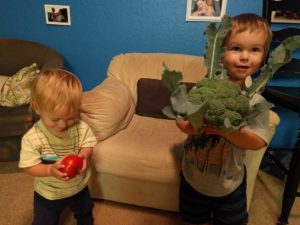

November is cool. You barely have to water. Finally, after our long dry summer which revolves around irrigation, you get to stroll through the garden and watch the plants grow with little and infrequent need of your help. Handwatering is now a pleasure.
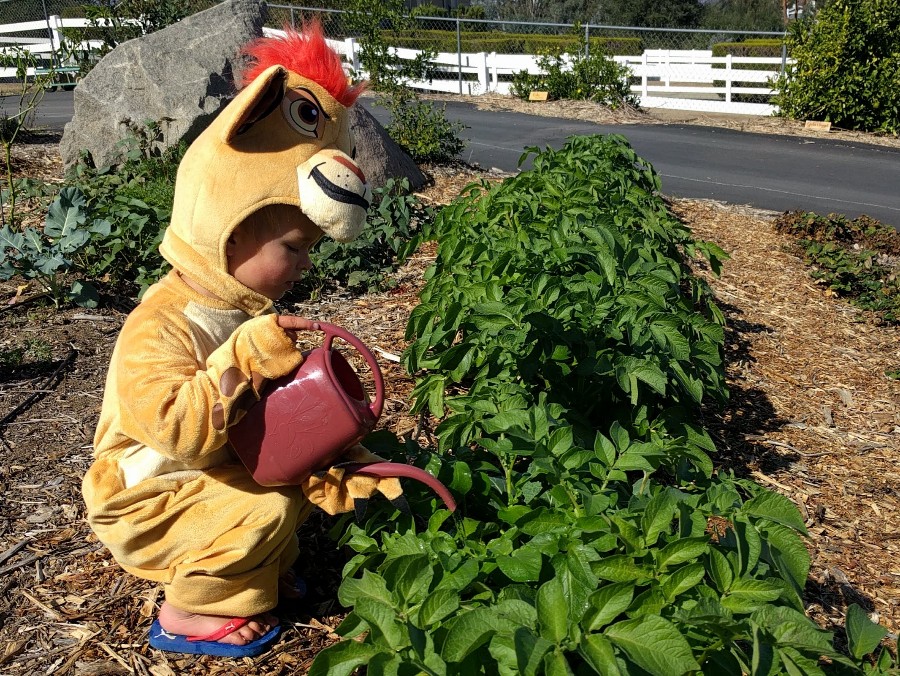
November is sowing more carrots. November is planting garlic. November is grape leaves falling. November is sprinkling California poppy seeds as the first rains fall. November is oranges turning orange. November is loquat trees flowering.
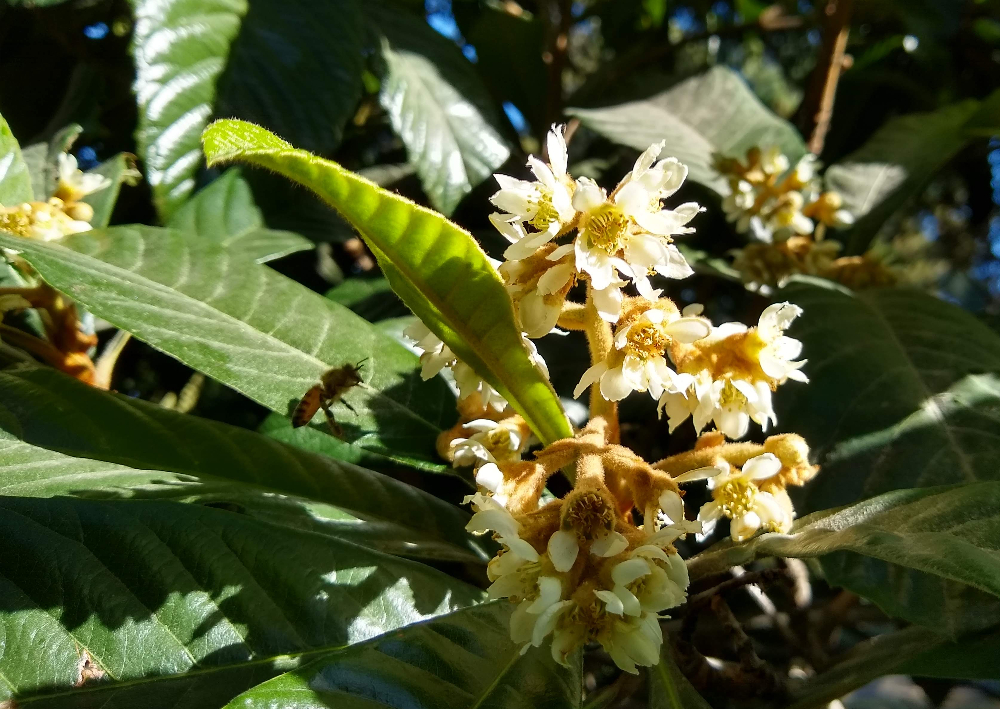
November is rediscovering your socks and sweatshirts. November is making the first fire in the fireplace. November is cleaning rain gutters and screens on rain tanks. November is remembering how long shadows can get. November is harvesting for Thanksgiving, the best meal of the year. November is digging up sweet potatoes.

Gardeners in most parts of the U.S. have wrapped up the year by November. In Southern California in November, however, we have so much to do. We can:
Sow and plant:
– Beets, broccoli, brussels sprouts, cabbage, carrots, cauliflower, cilantro, garlic, greens (chard, collards, kale, mustard), kohlrabi, lettuce, onion, parsley, parsnips, peas, radish, spinach, turnips
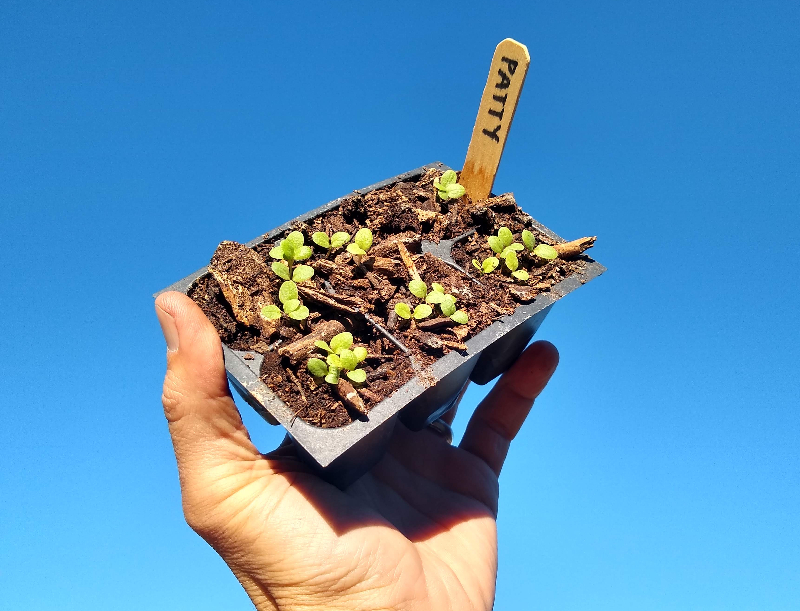
(See my list of vegetable posts for tips on growing these crops in Southern California)
Harvest and eat:
– Vegetables: sweet potatoes, tomatoes, tomatillos, beets, peppers, squash, basil, beans, corn, greens, lettuce, broccoli, cauliflower
(My cauliflower harvest for Thanksgiving 2020)
– Fruits: passion fruit, apples (Pink Lady, Granny Smith, Sundowner), persimmons, pomegranates, mangos, limes, dragon fruit, bananas, macadamia nuts, mandarins (Kishu, Satsuma), cherimoyas, guavas, avocados (Mexicola Grande, and maybe late Reeds and Lambs, and maybe early Bacons and Fuertes)
(See my post “When to pick oranges and tangerines.”)


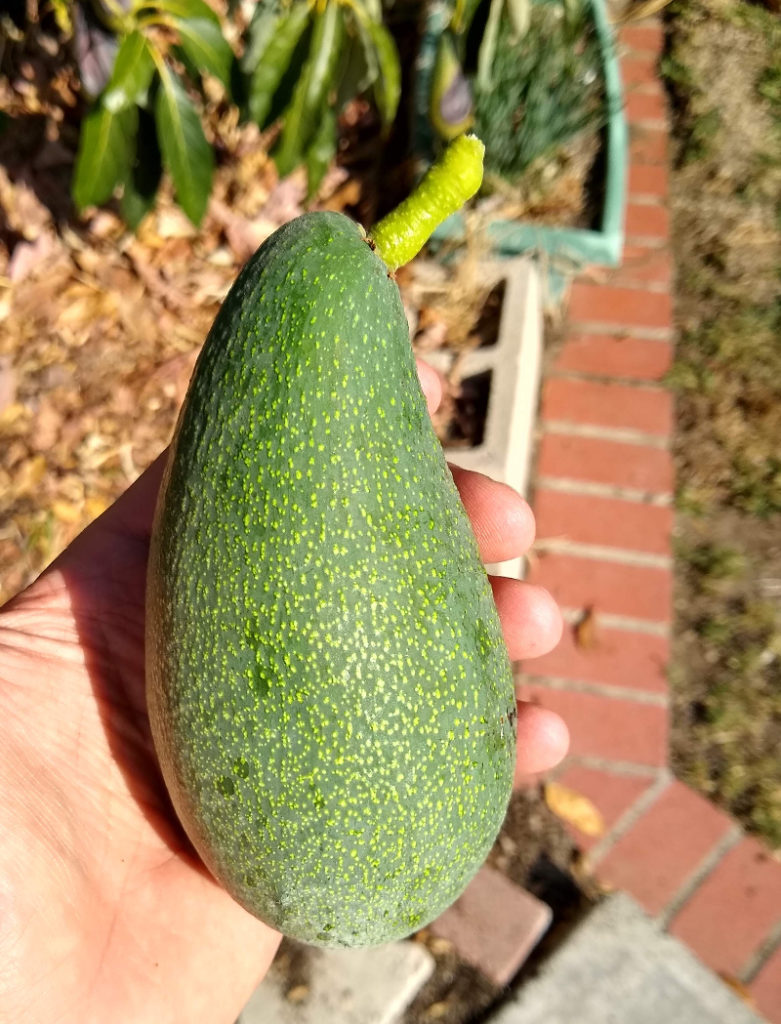
Miscellaneous
Have you turned off automatic irrigation? This time of year, as alluded to above, I go back to watering most of my yard manually since plants need water much less frequently and there is intermittent rain — or at least clouds. This can save water and make for healthier plants.
November 2 is Girdle Day for me. Before your imagination runs wild, what that means is that I girdle avocado trees on or around November 2. Check out my post, “Girdling avocado trees for consistent fruiting.”
“Avocado Grower, don’t be greedy: remove fruit.” If you have a tree with a ton of fruit on a single branch, consider thinning some before Santa Ana winds and winter storm winds arrive and break the branch. Especially watch varieties with big, heavy fruit like Reed.
Finally, peanuts! In 2017, we tried growing them for the first time, and it was in November that we harvested them. The boys shelled and ate them raw as soon as we pulled them up. My wife and I roasted ours. I never imagined the common peanut could be so flavorful.
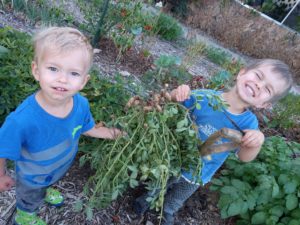
November is so cool.
Thank you for your support. It’s what keeps my posts coming and the ads away.
All of my Yard Posts are listed HERE

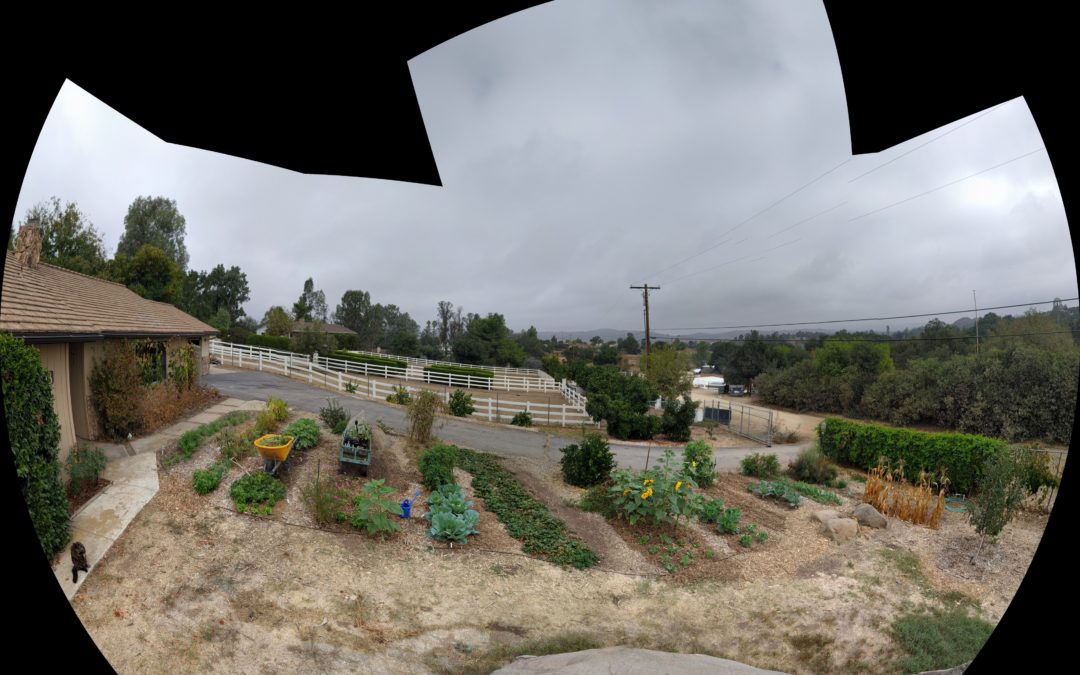


Hi, Greg, your website is fantastic! Thanks for all the great info!
I found it because the avocado tree I gave my husband as a 2015 Father’s Day gift just began making flowers yesterday and I was desperate for info. The tree had a bunch of little clusters of buds but at first I did not know if they would be leaves or flowers. We live on Cape Cod and just brought the tree indoors last month, as we do each year when temps drop to around 40 degrees (we are in zone 7a).
I was wondering if you think we might get any fruit the first year it flowers? I have to dig out the info; I think this is a Haas tree and I bought it from fastgrowingtrees.com. I believe it was between 1.5 and 2 years old when it arrived and I think it was grafted, perhaps in Florida or maybe Georgia (cannot remember). So, it might be a minimum of 4 years old now and that seems about right for flowers, as far as I can tell with only beginning my research.
I think Bob repotted it (for the second time) this past summer.
How much longer after the tree flowers might it set fruit and then how long would it take the fruit to grow before I would pick it to ripen? I still have a ton of research to do, but am so excited about seeing the cute little flowers for the first time!
Cannot wait until my daughter comes home for the holidays…she is an environmental science grad student out there at UC Davis in the Soils & Biogeochemistry Department.
Your boys are adorable, btw! Children are wonderful. I also have a son, 28, and another daughter, 22. And they all have been brought up loving vegetables; we also have a big garden.
Also love your posts about chickens. We buy fresh eggs from a neighbor in southern Maine, where we have a second home, and his chickens are so friendly when we visit! Nothing store-bought compares to a fresh egg.
Thanks so much!
Correction: Sorry, it is a Cold Hardy Avocado; suggestion is that it could be planted with a Hass to increase yield, although it is a self-pollinator and does not need another tree to produce fruit.
Hi Cindy,
An avocado tree for Father’s Day . . . sounds like a perfect gift!
The good news is that if an avocado tree flowers, it can set fruit — no matter how old it is. Avocado trees (grafted ones) just don’t usually set fruit until they’re a couple years old because their flowers are not very good at being pollinated. A giant avocado tree can have a million flowers (literally) but still only set a few hundred fruit; that’s a terrible batting average.
The bad news is that your avocado tree is in an exceptionally challenging environment in terms of pollination. Insects, particularly bees, do most avocado pollination. You’ll probably have to try your hand at hand-pollination since your tree is indoors, and even if you could bring it outside in the afternoon, I’d imagine their isn’t much bee activity around this time of year on Cape Cod. (Am I wrong about that?)
To hand-pollinate, you need to use a small paint brush or Q-tip or something similar to brush the anthers when the flower is male and the anthers are dehiscent (you can see little flaps up like the ends are tattered). If you do this, enough pollen (need at least 20 grains) may stick to the stigma and fertilize it if the stigma is still white and receptive. Otherwise, you have to collect and store pollen to later apply to female flowers, which gets more complicated.
As if that isn’t already complicated, right? See this link for images of what a male avocado flower looks like: http://ucavo.ucr.edu/Flowering/FloweringBasics.html
Avocado varieties differ as to how long it takes for the fruit to mature. The range is about six months up to 18 months. This variety you bought is unknown to me. “Cold Hardy Avocado” is something I’ve never heard of before. But after reading the website’s description and seeing customer photos, I’d guess it might be the variety called ‘Mexicola’. Regardless, the avocado varieties that have the most cold tolerance all mature their fruit relatively fast, so you’re probably looking at six to 12 months from flower to mature fruit.
An avocado afterthought: Because you need all the pollination help you can get, you might want to add a second avocado tree that is well-known to be highly fruitful. Hass is very fruitful, but some others are even more so. A couple varieties that come to mind are Lamb Hass and Reed. I know of a guy who grows a highly productive Reed avocado tree in a greenhouse in central Texas.
Davis is a great place. My favorite gardening radio show is the Davis Garden Show. Maybe your daughter has listened to it?
I love the whole package of having my kids growing up eating from the garden and caring for our chickens. It’s affirming to hear that your children have turned out well with a similar upbringing.
Sincerely,
Greg
P.S. I copied and pasted this exchange on the post “How long until an avocado tree fruits” since I think it would be useful to readers there. Link: https://gregalder.com/yardposts/how-long-until-an-avocado-tree-fruits/
I had beets and leaf lettuce up about an inch high and something is clipping the leaves off the young plants. There might be a bite out each of the leaves, some are just clipped with no bite out them. Beets are totally gone and half the lettuce is gone. It seems to be happening at night. Both the beets and lettuce are in the same raised bed of 24” high.
Any thought on what is doing this.
Hi Joe,
Sounds like bugs or snails. Check the area and plants with a flashlight as soon as it gets dark.
Greg, long time reader. I have a Fuerte with about 10 avocados on a 7 year old.tree.No fruits until this year. When do i pick? A few are about 3 inches wide at max, about 2 1/2 inches long..Most smaller. They don’t seem to be ready yet but I don’t know.
Hi John,
My routine is to pick a first Fuerte on Thanksgiving. But especially on a young tree without numerous fruit, it would be wiser to wait until Christmas or so to pick your first. Fuertes only taste better and better until a peak around February and March. Here’s more on all things Fuerte: https://gregalder.com/yardposts/the-fuerte-avocado-tree-a-profile/
I have a lot of California poppies continuously growing on my property and would like to add more, along with other wildflower seeds. Can I really just sprinkle seeds around without covering? I figure now before this week’s rains would be a good time. I’m in Ventura County.
Hi Vickie,
You can, but it often helps to sprinkle a little compost or very light mulch over the seeds. It depends on the weather. The seeds need to be kept moist for long enough to germinate, which will happen without any covering as long as the weather is mild and rainy for many days in a row.
What I find effective to spread my poppies is harvest the whole plant when it dries out (including some seed heads that haven’t popped). Then I dry them in a box or paper bag. Then just before a rain I place them on the ground where I want them to grow and run over them with a lawn mower. This makes a light mulch to partially cover the seeds. They germinate well for me with this process.
Thanks for the advice Greg. Regarding my existing poppies, I haven’t had to worry about spreading seed so far. They are continuously multiplying without any effort on my part!
I look forward to your email every week. Great information!
I notice you don’t have any gopher or rabbit proofing in you garden. How do you prevent them from eating your crops? Nearly everything I planted this year was eaten by rabbits, gophers , grasshoppers, junebug grubs, etc.
Hi Ari,
I do have to prevent my plants from being devoured by gophers and rabbits too.
For gophers, I trap using Cinch traps. See here: https://gregalder.com/yardposts/the-best-gopher-trap-its-a-cinch/
For rabbits, I use various little fences and cages for plants from time to time when they’re young (they don’t need protection when they’re bigger at my place). But I only need to protect my plants when we don’t have cats. Right now, we have a couple of great cats that keep the rabbits out of the yard (or else they’re cat food!). See more here: https://gregalder.com/yardposts/protecting-vegetables-and-fruit-trees-from-rabbits/
Hi Greg,
Hope you and the family are all doing well this beautiful winter day.
I wanted to ask you about Aspragus ferns.
We planted a patch of asparagus (UC 157, apparently already 1 year old when we planted it) in Feb 2023 and it’s growing beautifully. The ferns are thick and green! And that’s my question. Everything I read seems to indicate that the ferns will “turn yellow” some time in the fall. That isn’t happening for us 🙂 .. So I was wondering when I should call it a day and cut the ferns off for the fall. I’d love to harvest some asparagus in the spring! I know I shouldn’t harvest too much (if any) since it’s the first “producing” year for this plant but I do want to make sure I don’t just let the ferns keep growing if they aren’t supposed to.
Thank you and hope to see you some time!
Best,
MB
Hi MB,
You’re making me wish I still had my asparagus patch. I removed it a few years back.
Asparagus might behave differently for you, but my UC 157 didn’t turn all yellow or brown at once so I never cut or mowed them all back in winter. I cut individuals back when each turned color. But I don’t think cutting them helps the plant in a significant way; I think it just gets the dead or dying ferns out of the way in order to make your patch look prettier and cleaner and easier to harvest. (Asparagus patches are just like raspberry patches in this way.) I bet if you never cut the old shoots the plant would still put out the same amount of new spears. That’s my guess.
You should definitely harvest a few spears in the spring. As long as you don’t harvest too many, the plants should remain vigorous.
Thank you Greg – as always!
Wish you and your family a very Merry Christmas and a Happy New Year!
Best,
MB
What variety of guava is that? Where do you get your guavas? I’ve been searching for a nursery that has a Mexican guava tree for sale in San Diego, but haven’t had luck. Have really loved how my other two guava trees have grown recently, and looking to expand my collection.
Hi Joe,
That’s from an old guava tree at my grandparents’ house. I have no idea what variety it is. I’ve seen a lot of guava trees for sale at Walter Andersen nurseries (Point Loma and Poway), and I know that Bonita Creek (in Bonita) also sells some unique guavas.